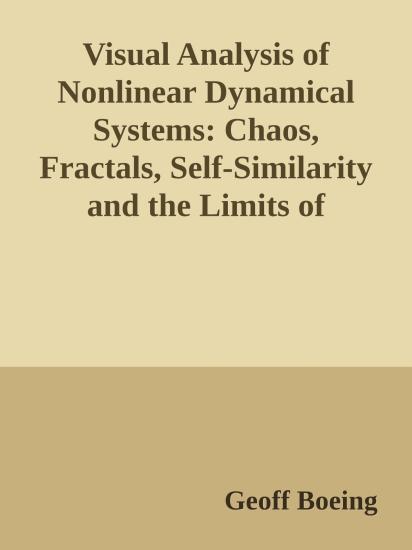
Rating: Not rated
Tags: Nearly all nontrivial real-world systems are nonlinear dynamical systems. Chaos describes certain nonlinear dynamical systems that have a very sensitive dependence on initial conditions. Chaotic systems are always deterministic and may be very simple, yet they produce completely unpredictable and divergent behavior. Systems of nonlinear equations are difficult to solve analytically, and scientists have relied heavily on visual and qualitative approaches to discover and analyze the dynamics of nonlinearity. Indeed, few fields have drawn as heavily from visualization methods for their seminal innovations: from strange attractors, to bifurcation diagrams, to cobweb plots, to phase diagrams and embedding. Although the social sciences are increasingly studying these types of systems, seminal concepts remain murky or loosely adopted. This article has three aims. First, it argues for several visualization methods to critically analyze and understand the behavior of nonlinear dynamical systems. Second, it uses these visualizations to introduce the foundations of nonlinear dynamics, chaos, fractals, self-similarity and the limits of prediction. Finally, it presents Pynamical, an open-source Python package to easily visualize and explore nonlinear dynamical systems’ behavior., visualization; nonlinear dynamics; chaos; fractal; attractor; bifurcation; dynamical systems; prediction; python; logistic map
Added: April 25, 2021
Modified: November 5, 2021